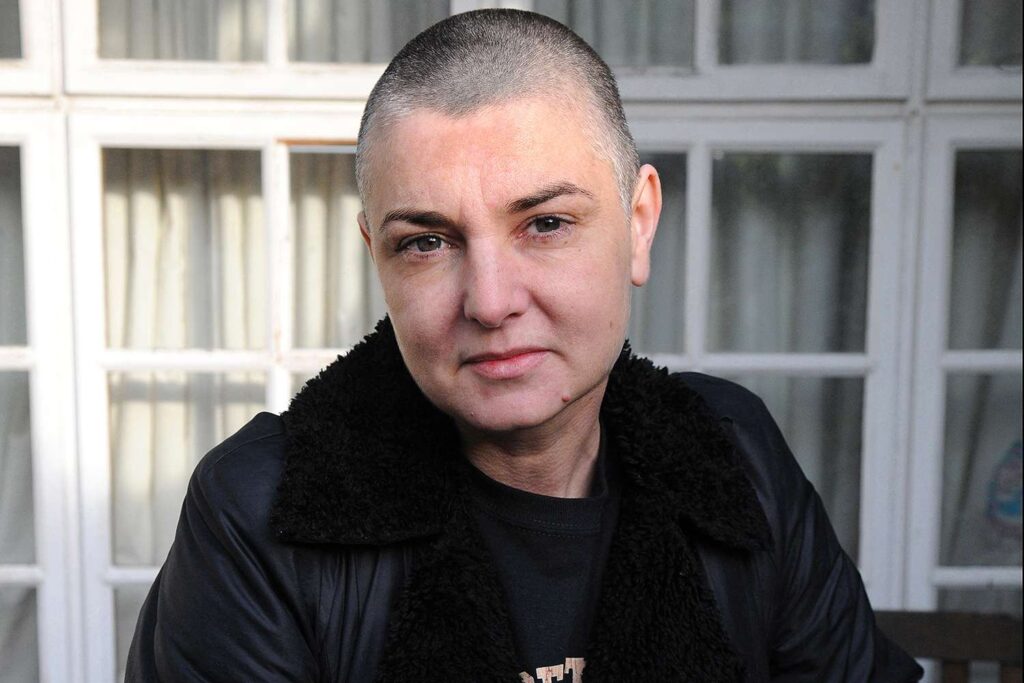
The Life and Artistry of Sinéad O’Connor: A Journey of Triumph and Tragedy
In the realm of music, there are artists whose lives and careers blaze with brilliance, leaving indelible marks on the cultural landscape. Sinéad O’Connor, an Irish singer-songwriter, is one such luminary whose tumultuous life and unique musical contributions have left an indelible imprint on the world. From her meteoric rise to fame to her controversial acts and personal struggles, O’Connor’s journey is one that intertwines artistry, activism, and personal pain. This exploration delves into the life and death of Sinéad O’Connor, celebrating her creative prowess while also acknowledging the challenges she faced.
Early Life and Artistic Awakening
Sinéad Marie Bernadette O’Connor was born on December 8, 1966, in Dublin, Ireland. Growing up in a troubled household marked by familial tensions, her childhood was far from idyllic. This environment would greatly influence both her artistry and her personal struggles.
A pivotal moment in Sinéad O’Connor’s life came with her discovery of music. She found solace in the works of artists like Bob Dylan, Joni Mitchell, and Bob Marley. These influences ignited her passion for songwriting and provided an outlet for her complex emotions. Her musical journey began with the formation of her first band, Ton Ton Macoute, in the late 1970s, where her distinctive voice and uncompromising style began to emerge.
Rise to Fame and International Recognition
Sinéad O’Connor’s breakthrough came with the release of her debut album, “The Lion and the Cobra,” in 1987. The album’s ethereal blend of folk, rock, and pop showcased her raw and emotionally charged vocals, setting her apart from her contemporaries. The single “Mandinka” became a hit, and O’Connor’s striking bald head and powerful presence in the music video solidified her image as an iconoclastic force.
.
.
However, it was her cover of Prince‘s song “Nothing Compares 2 U” from her sophomore album “I Do Not Want What I Haven’t Got” (1990) that catapulted her to international superstardom. The song’s emotional intensity, coupled with O’Connor’s tearful performance in the music video, resonated deeply with audiences worldwide. The song topped charts and earned her several Grammy nominations, firmly establishing her as a musical powerhouse.
Activism and Controversy
O’Connor’s artistry was inseparable from her activism. She used her platform to address societal issues, often courting controversy in the process. One of the most memorable instances was her appearance on “Saturday Night Live” in 1992. During a performance of Bob Marley’s song “War,” she famously tore a picture of Pope John Paul II, protesting the Catholic Church’s handling of sexual abuse scandals. This bold act drew both praise for her courage and criticism for its perceived disrespect.
Her commitment to social justice extended beyond the stage. O’Connor advocated for LGBTQ+ rights, women’s rights, and spoke out against child abuse. Her willingness to tackle taboo subjects solidified her status as an artist unafraid of confronting uncomfortable truths.
Struggles with Mental Health
Behind O’Connor’s public persona lay a complex web of personal struggles, chief among them her battle with mental health issues. Her history of depression, anxiety, and bipolar disorder profoundly impacted her life and career. O’Connor was candid about her experiences, using her voice to destigmatize mental health discussions, particularly in the entertainment industry.
Her struggles were further compounded by the challenges of fame and the scrutiny that came with it. The pressure to conform to industry norms often clashed with her desire for authenticity. Her decisions, such as refusing to attend award shows or declining to play by industry rules, sometimes led to professional setbacks but also fortified her reputation as an uncompromising artist.
Fluctuating Musical Trajectory
As Sinéad O’Connor navigated her personal battles, her musical trajectory exhibited both evolution and experimentation. She delved into different genres, exploring electronica, reggae, and traditional Irish music. While not all her ventures received universal acclaim, they demonstrated her artistic versatility and refusal to be confined by genre boundaries.
Despite the ups and downs in her career, O’Connor’s music remained a source of catharsis for her and her fans. Albums like “Universal Mother” (1994) and “Faith and Courage” (2000) showcased her continued dedication to her craft, even as she wrestled with her inner demons.
.
.
Legacy and Impact
Sinéad O’Connor’s legacy extends far beyond her musical achievements. Her indomitable spirit, fearless advocacy, and candid discussions about mental health have left an enduring impact. Her influence can be heard in the works of artists ranging from Fiona Apple to Miley Cyrus, who similarly blend personal vulnerability with unapologetic artistry.
Her passing was met with an outpouring of grief from fans, fellow musicians, and activists who admired her contributions to both music and society. O’Connor’s journey was one of triumphs and tribulations, a reminder that even amid great artistry, the human experience is fraught with challenges.
Conclusion
The life and death of Sinéad O’Connor is a story of resilience, creativity, and the complex interplay between art and personal struggles. Her unique voice, both musically and figuratively, challenged conventions, shattered boundaries, and paved the way for meaningful conversations about mental health and societal issues. As the world reflects on her legacy, it’s evident that her impact will continue to reverberate through the hearts of those who found solace, inspiration, and courage in her music and her unwavering authenticity.
.

.
On July 26, 2023, Sinéad O’Connor was found unresponsive at her flat in Herne Hill, South London, and confirmed dead at the age of 56.
Check out Sinéad O’Connor on Amazon
.


Pingback: The Bassist Behind The Smiths, Andy Rourke died May 19, 2023 - Dead Musicians